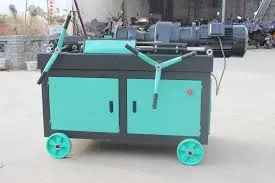
-
 Afrikaans
Afrikaans -
 Albanian
Albanian -
 Amharic
Amharic -
 Arabic
Arabic -
 Armenian
Armenian -
 Azerbaijani
Azerbaijani -
 Basque
Basque -
 Belarusian
Belarusian -
 Bengali
Bengali -
 Bosnian
Bosnian -
 Bulgarian
Bulgarian -
 Catalan
Catalan -
 Cebuano
Cebuano -
 Corsican
Corsican -
 Croatian
Croatian -
 Czech
Czech -
 Danish
Danish -
 Dutch
Dutch -
 English
English -
 Esperanto
Esperanto -
 Estonian
Estonian -
 Finnish
Finnish -
 French
French -
 Frisian
Frisian -
 Galician
Galician -
 Georgian
Georgian -
 German
German -
 Greek
Greek -
 Gujarati
Gujarati -
 Haitian Creole
Haitian Creole -
 hausa
hausa -
 hawaiian
hawaiian -
 Hebrew
Hebrew -
 Hindi
Hindi -
 Miao
Miao -
 Hungarian
Hungarian -
 Icelandic
Icelandic -
 igbo
igbo -
 Indonesian
Indonesian -
 irish
irish -
 Italian
Italian -
 Japanese
Japanese -
 Javanese
Javanese -
 Kannada
Kannada -
 kazakh
kazakh -
 Khmer
Khmer -
 Rwandese
Rwandese -
 Korean
Korean -
 Kurdish
Kurdish -
 Kyrgyz
Kyrgyz -
 Lao
Lao -
 Latin
Latin -
 Latvian
Latvian -
 Lithuanian
Lithuanian -
 Luxembourgish
Luxembourgish -
 Macedonian
Macedonian -
 Malgashi
Malgashi -
 Malay
Malay -
 Malayalam
Malayalam -
 Maltese
Maltese -
 Maori
Maori -
 Marathi
Marathi -
 Mongolian
Mongolian -
 Myanmar
Myanmar -
 Nepali
Nepali -
 Norwegian
Norwegian -
 Norwegian
Norwegian -
 Occitan
Occitan -
 Pashto
Pashto -
 Persian
Persian -
 Polish
Polish -
 Portuguese
Portuguese -
 Punjabi
Punjabi -
 Romanian
Romanian -
 Russian
Russian -
 Samoan
Samoan -
 Scottish Gaelic
Scottish Gaelic -
 Serbian
Serbian -
 Sesotho
Sesotho -
 Shona
Shona -
 Sindhi
Sindhi -
 Sinhala
Sinhala -
 Slovak
Slovak -
 Slovenian
Slovenian -
 Somali
Somali -
 Spanish
Spanish -
 Sundanese
Sundanese -
 Swahili
Swahili -
 Swedish
Swedish -
 Tagalog
Tagalog -
 Tajik
Tajik -
 Tamil
Tamil -
 Tatar
Tatar -
 Telugu
Telugu -
 Thai
Thai -
 Turkish
Turkish -
 Turkmen
Turkmen -
 Ukrainian
Ukrainian -
 Urdu
Urdu -
 Uighur
Uighur -
 Uzbek
Uzbek -
 Vietnamese
Vietnamese -
 Welsh
Welsh -
 Bantu
Bantu -
 Yiddish
Yiddish -
 Yoruba
Yoruba -
 Zulu
Zulu
China Hydraulic Threading Machines for Efficient and Precise Pipe Threading Solutions
A Comprehensive Overview of China’s Hydraulic Threading Machines
In the realm of industrial machinery, hydraulic threading machines have become indispensable tools, especially in the context of China's rapid industrialization and modernization efforts. These machines are engineered to produce threads on various materials, including metals and plastics, with precision and efficiency. Noteworthy advancements in technology have led to the development of hydraulic threading machines that offer enhanced capabilities in terms of speed, accuracy, and user-friendliness.
Understanding Hydraulic Threading Machines
At its core, a hydraulic threading machine utilizes hydraulic power to perform threading operations. This involves applying controlled pressure to create threaded surfaces on cylindrical objects. The hydraulic mechanism allows for greater force application, enabling the machine to work with tougher materials and produce finer threads than traditional threading machines.
Hydraulic threading machines are typically used in industries such as construction, oil and gas, plumbing, and manufacturing, where threaded connections are essential for the assembly of pipes, fittings, and various mechanical components. The ability to produce threads accurately and quickly is critical in these sectors, where even minor discrepancies can lead to significant issues in functionality and safety.
Features and Benefits
One of the key benefits of hydraulic threading machines from China is their advanced technology. Many of these machines incorporate digital controls, allowing for programmable operations that can enhance productivity. Users can store multiple threading patterns and parameters, enabling quick adjustments for different tasks. This adaptability not only saves time but also minimizes the risk of human error during the setup process.
Additionally, contemporary hydraulic threading machines are designed with safety in mind. They often come equipped with safety guards and emergency stop features to protect operators from accidents. The hydraulic systems themselves are also engineered for efficiency and reliability, minimizing maintenance requirements while ensuring longevity.
china hydraulic threading machine

Moreover, the construction industry’s growing demand for high-quality threading solutions has prompted manufacturers in China to innovate continually. This has led to the emergence of machines that are not only more efficient but also environmentally friendly. Newer models often include energy-saving features, reducing their carbon footprint and supporting sustainable industrial practices.
Market Trends and Growth
China's hydraulic threading machine market has seen substantial growth over recent years, driven largely by the country's booming construction and energy sectors. As more infrastructure projects emerge and industries evolve, the need for reliable and efficient threading solutions grows correspondingly.
Another factor contributing to market expansion is globalization. Chinese manufacturers are increasingly exporting hydraulic threading machines to various countries, establishing a strong presence in international markets. This growth is supported by competitive pricing and the ability of Chinese companies to offer custom solutions tailored to the specific needs of customers worldwide.
Conclusion
In conclusion, hydraulic threading machines play a vital role in various industries, and China has positioned itself as a leader in the development and manufacturing of these essential tools. With continuous advancements in technology, a focus on safety, and a commitment to sustainability, Chinese manufacturers are not only meeting domestic demands but are also making significant inroads into international markets.
As industries evolve and new challenges arise, the importance of efficient and reliable threading solutions will only continue to grow. With an enduring emphasis on innovation and quality, China’s hydraulic threading machines are set to remain at the forefront of industrial manufacturing, ensuring that the global demand for precision and efficiency is met now and in the future.
